By Shiva Thorat, TwoCircles.net
For the past eight years, November 26 has become synonymous with the terror attacks in Mumbai, but while no one will forget that tragic day, it is also a day of immense joy for the citizens of this country. On this day, Babasaheb Ambedkar handed over the Indian Constitution to the Indian government. While the event is symbolically celebrated across the nation, it is safe to say that there is no place in the country that matches the sight of Chaitya Bhoomi in Dadar, Mumbai. And a similar, but much bigger crowd returns to the place 10 days later, albeit with a different set of emotions.
On both these days, one thing becomes clear: only if you believe in Ambedkarite ideas, you will get the importance of these two days.
On December 6, a sea of people from all parts of Maharashtra, and some from across the country, gathered in Dadar, Mumbai to pay their tributes to Dr Babasaheb Ambedkar and mark his 6st death anniversary.
On this day, in 1956, Babasaheb was buried at the Chaitya Bhoomi near the Hindu Smashan bhumi in Dadar.
And like every year, it was a testament to the love that people continue to shower on the architect of Indian constitution and the biggest Dalit leader the country has ever seen. Wherever you looked, it was a sea of people. It would be both impossible and futile to put a number on how many people arrived, mainly because the emotion and the love for Babasaheb, and the calls of Jai Bhim, cannot be zeroed down to a number. This was not a rally afterall; there were no political slogans, no chaos, and certainly no leader preaching what he/she believed. Instead, all one could from the Dadar railway station to Shivaji park and Chaityabhumi was just people, most of whom wore white clothes.
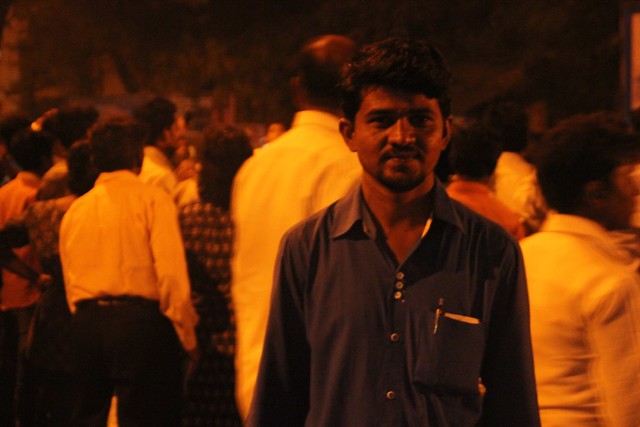 shankar Yashod
shankar YashodAs someone who has been visiting the place for the last seven years, it is also interesting to see the changes that the December 6 event has undergone. When I first visited Chaitya Bhoomi on December 6, it was extremely common to see cassette shops, which sold Ambedkarite music. However, one of the biggest changes this year was the extensive presence of book stalls-almost 100-selling a plethora of books. Earlier, there were book shops too, of course, but most sold the standard biographies and works on and about the Indian constitution. But this time, there were books on Savitribai and Jyotiba Phule, Periyar, even Marx, Annabhau Sathe, and others in three languages: Marathi, English and Hindi. And witnessing the crowd in these shops was a heartening moment.
The emotion that day was palpable. A lady, who would not let me take her picture, spoke to me nevertheless, and said that the impression of people coming here to cry, or weep over the loss of Ambedkar, is wrong. “People here do not want to cry, but take energy from the Mahapurush (great person). Till I am alive, I will come and visit the place where my Babasaheb is sleeping.”
She added, “A person who believes in Babasaheb can understand my feelings. Otherwise, it will fly over your head. Like an aeroplane.” The lady, who had travelled from Aurangabad, was carrying a huge bag, and when I tried to offer her some financial help, she refused, saying: “I am rich because I have Babasaheb.”
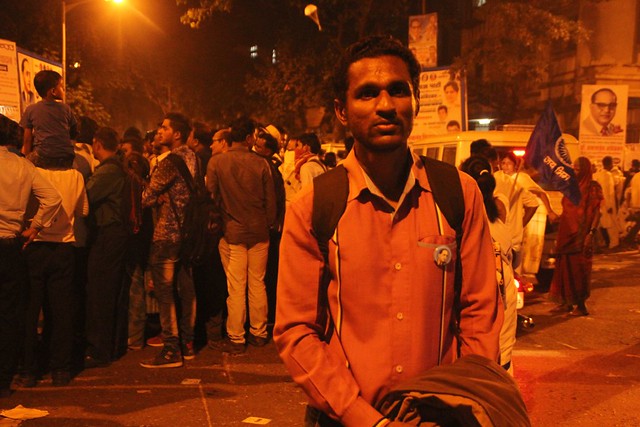 Manoj Nagrale
Manoj NagraleManoj Nagrale, a resident of Dhule and currently pursuing Masters in Mass communication, had to stand throughout the whole journey from his district to Dadar, in the packed general compartment. “I have no complain regarding why there is so much crowd in the general compartment. But I do want to say that at least for today, the government should increase the general compartment so Ambedkarites can go and pay homage to their beloved,” he said.
Nagrale, who works with an Ambedkarite organisation called Jagar Kala Manch, says he comes to Chaitya Bhoomi every year. He has performed at various villages in Dhule district of Khandesh region of Maharashtra. For him, Babasaheb Ambedkar means the annihilation of caste, class, the subjugation of women and “the freedom to breathe: to be able to write, sing and express” his views.
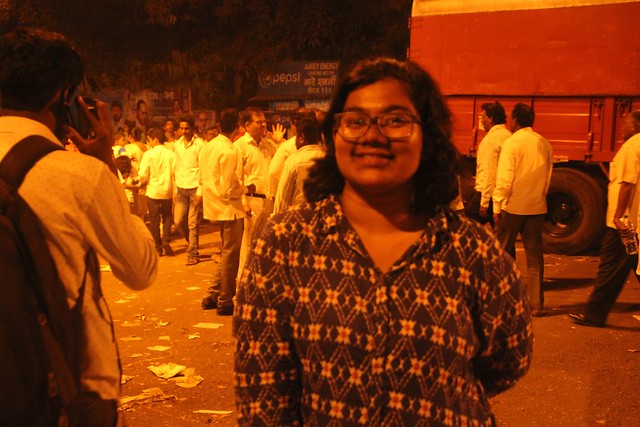 Bhakti Vardan
Bhakti VardanBhakti Vardan, a 22-year-old who studies social work, was visiting for the first time. She had bought a book called “Fascist Thakare” by Sudhir Dhawale. Vardan sees Ambedkar as her inspiration. “Initially I used to think that December 6 was the cause of a mess in Mumbai; people would come and dirty the place. But after working in the social field and in Dalit communities, I have realised that they have been forced to live like this. This place is magical because of the energy; it gives me so much strength to fight against the family institute of caste system,” she says.
For the Jadhav family from Sanjay Gandhi Nagar Vikhroli, it was a way to spend family time, sharing their love for Babasaheb. Ritik, the son of 14-year-old boy said that “We say Jai Bhim every day, to remember him. We are not frightened to say Jay Bhim”. Shubham Jadhav, who is studying in the 7th standard, said, “Babasaheb gave us liberty. I feel proud when I see such a huge crowd and feel a part of it. India will revert to Buddhism in some days. Jai Bhim”.
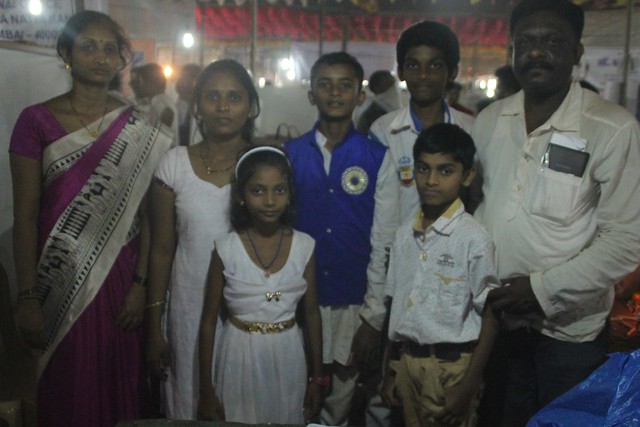 The Jadhav family
The Jadhav familyTrupti Pravin Jadhav, the mother, said, “If I am not able to show our community to my children, I will be betraying the words of Babasaheb”
On the other hand, Akinta Ashish Jadhav spent time teaching her son Shantanu about Buddhism and why the community gathers here every year.
According to Shankar Yashod from Chalisgaon, “Thousand of years under the caste system was meant to be destroyed by Babasaheb Ambedkar through the constitutional writing, but we have failed him. When I come here, I can feel the energy among us but we must also take the responsibility to promote the thoughts of Babasaheb.”
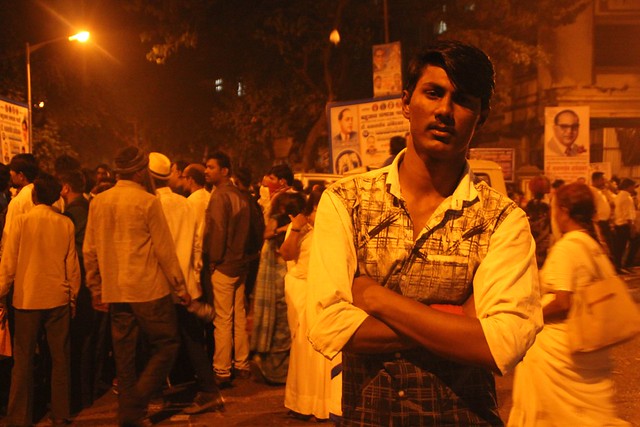 Vijay Wagh
Vijay WaghVijay Wagh, a 24-year-old engineer, has been visiting the place for the past 10 years. He sees the event as “a centre for anti-caste, anti-class movement.”
“Whatever I am today, it is because of Babasaheb. I respect him not only because I got education due to his efforts, but also for teaching us how to fight against the caste system,” he added.
